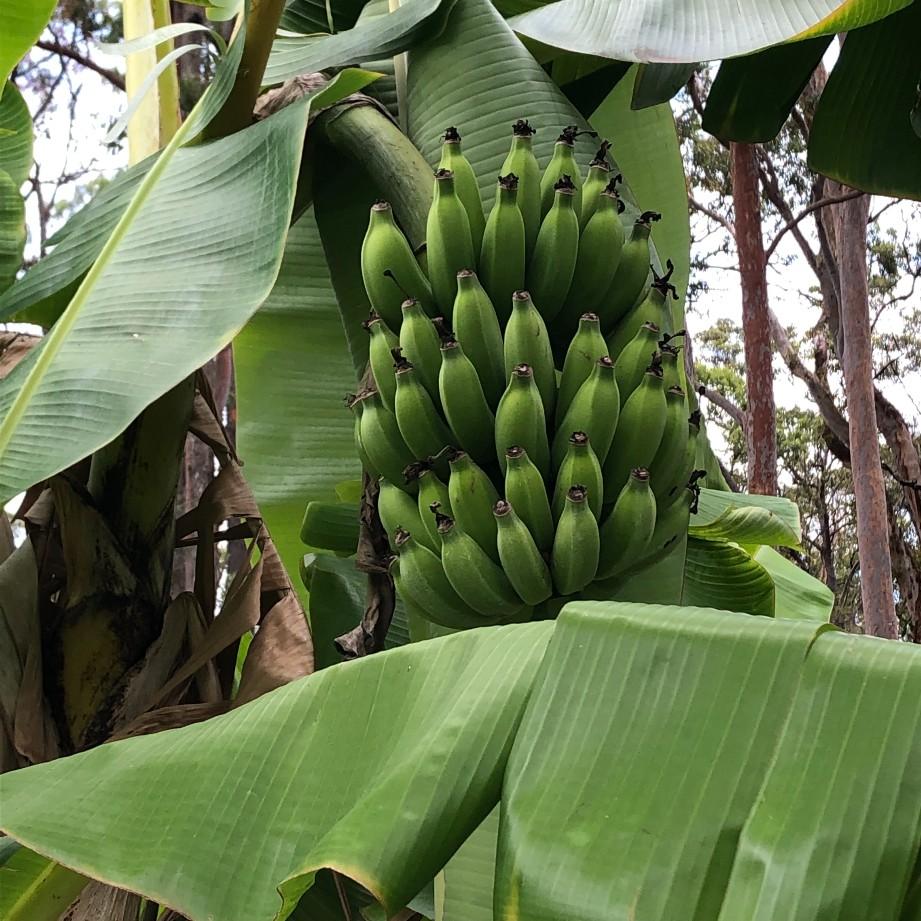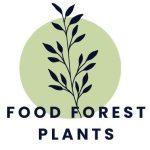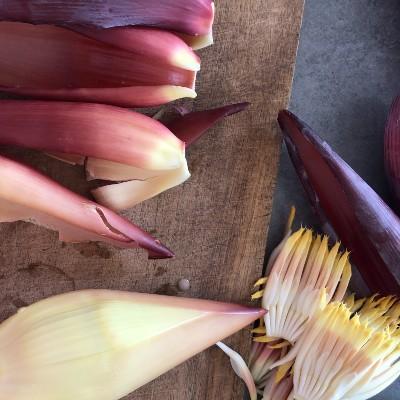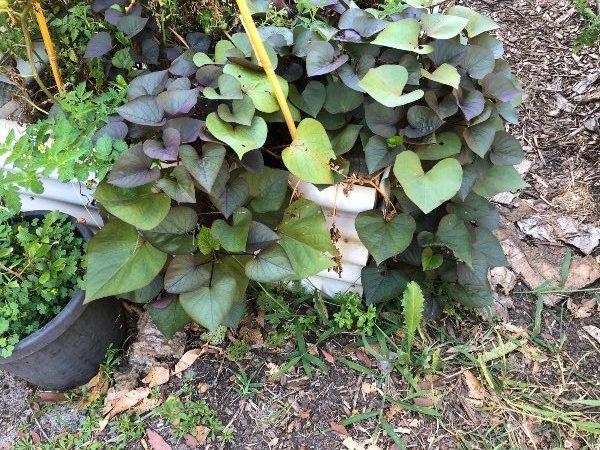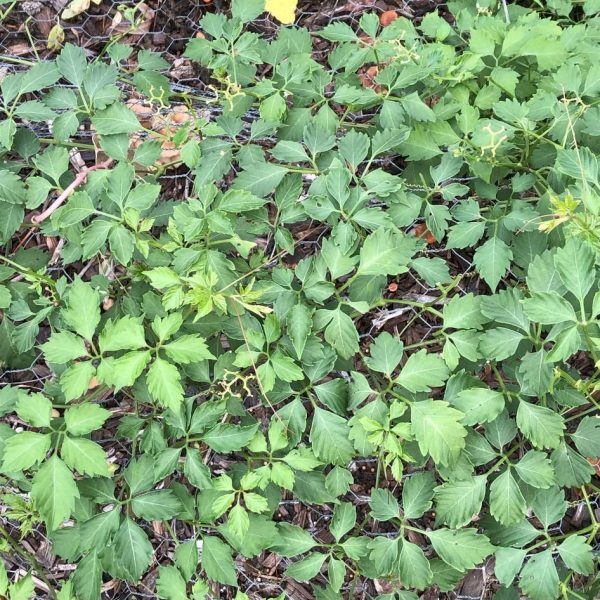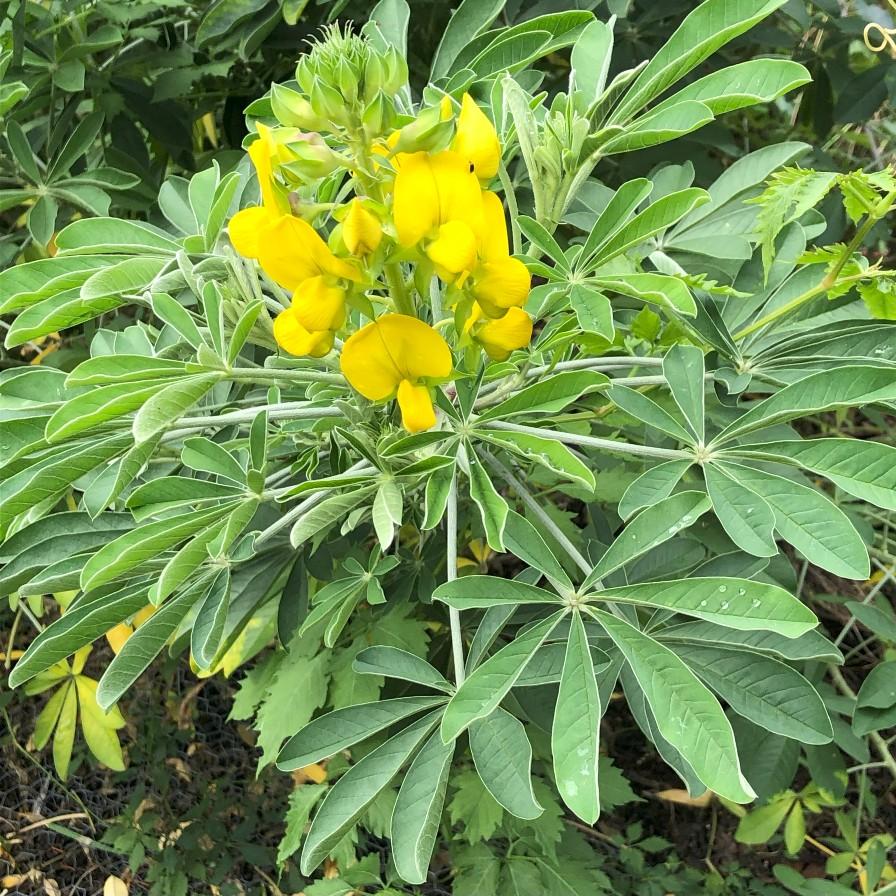
You could be tempted to start your Food Forest like an orchard: there is this cleared land, so you plant the fruit trees, water them, fertilise them and watch them grow. You may have a bit of foresight and check the drainage and, if needed, you build swales, terraces or drainage lines so that there are no problems with waterlogging or erosion. You may even check the compaction of the soil and do some deep ripping while adding gypsum to open up the soil. This way of thinking is common in vegetable production, in commercial orchards and in clear-cutting forestry.
This way of managing the land has great advantages. All that you want to harvest is in one place, it’s easily accessible with machinery, you could design the system for cherry picker access or for an irrigation system for example.
What is a Food Forest?
The Food Forest idea is inspired by nature, which is more random, messy, complex and self-regulating. If you walk into an Australian eucalyptus forest, you will see that there is not much to eat (for you), there is very little of usable timber (mostly just firewood), and so much of dead wood that it’s hard to walk through it. Also, when you look closely, you will see a lot of fungal infections, galls, insect damage, dieback due to waterlogging, simply, some plants may be struggling. The system itself is resilient, yes, but there is not much for you to harvest. It’s mainly geared towards survival.
So, in a Food Forest, you try to create an artificial ecosystem which can sustain you. This means you want it to be more abundant than a normal, natural system. The fact that natural systems regulate themselves doesn’t always mean that it will work to your advantage. You need to learn to ride the beast. You improve the drainage, the soil fertility, you introduce diversity with interlocking pieces of a puzzle. You try, you observe, you learn, then try again. It’s a never-ending journey. Very rewarding.
At the beginning, there is the drainage issue. The shape of the land. This needs to be considered carefully and well. Once you start planting it’s too late to change the shape of the land. We will deal with this important topic in another blog. Let’s assume we are ready for planting.
Most trees are social creatures. Their roots mingle, they signal through the chemical exudates on the root tips to each other and to the other life in the soil. There is always communication. Also, they have spatial awareness. They know at what time of the day they are shaded from which direction and they take it into account when they grow new shoots.
There is competition but also cooperation. You can see the forest a as a team in which each member has different strengths and weaknesses. Some resist drought, or waterlogging, or wind. Some grow fast and prepare the stage for entry of others. Some take their time, but dominate later. Some fix atmospheric nitrogen in their roots, some are bio accumulators – scavengers of nutrients. When you design your system, you take all these qualities into account.
Generally, you always overplant at the beginning and then a natural selection takes place. Or, you take out the plants that fulfilled their purpose to make space for the others. At the end of the day, you call the shots. You are the king of this ecosystem. You support those that nourish you and eliminate those that steal from you. Also, allow your kingdom to reveal its beauty, the harmony of shapes, colours and sounds. Plants grow better if you caress them with your gaze of admiration.
The Green Helpers
There are plants that prepare the ground for others. These are the weeds and fast growing (and usually short lived) pioneer trees and shrubs.
When you plant your Food Forest, most of the plants you plant are these supportive species that later become disposable. This overplanting is important.
The noble job of all weeds is to colonise naked land and revive the soil again. The soil wants to be covered, it wants to be populated by the little creatures, it wants to be penetrated by the roots. That’s why one of the main management tasks in Food Forest is keeping the soil covered with organic matter. The only time you expose the soil is when you want to sow little seeds like vegetables. This is something that vegetables and weeds have in common – they both colonise the bare ground. One could say that vegetables are weeds selected and bred by man.
So, from this point of view: leave the weeds in the ground if you have nothing else there to cover the ground and if they are easy to get rid of in the future. If you decide to rip them out, you have a precious source of organic matter. You can put them up in a pile, or simply leave them on the surface of the soil as a mulch, or you can put them in a bucket with water and make brews out of them. Rule number one: if you pull them out BEFORE the seeds form, they will not grow back. On this note: daisies (e.g. fireweed) can ripen the seeds even from half opened flowers – there is enough energy in the capitulum to do it.
The pioneer trees are used in the same way. They are a resource of organic matter, of nutrients and of shade. Chop branches off if they cast too much shade. Put them through the mulcher or keep them coarse, up to you.
Fruit and nut trees from cold and temperate climates usually prefer as much sun as possible from an early stage. The warmer the climate, the more shade the young trees will need to protect them from the strong sun and, in marginal climates, from cold. Here in our garden, one Moringa tree which is under another tree kept some foliage over the winter. The others are bare.
Some of our favourites:
Grasses – the big ones. Sugar Cane is on the picture. Great for screens, windbreaks, soil improvement, fodder, making drinks.
Other useful grasses are Vetiver Grass and Bana Grass. While most of the grasses are possibly disposable and can be shaded out or hacked to the ground to oblivion when no longer needed, Bamboo deserves a permanent place. Once established, Bamboo is impossible to get rid of.
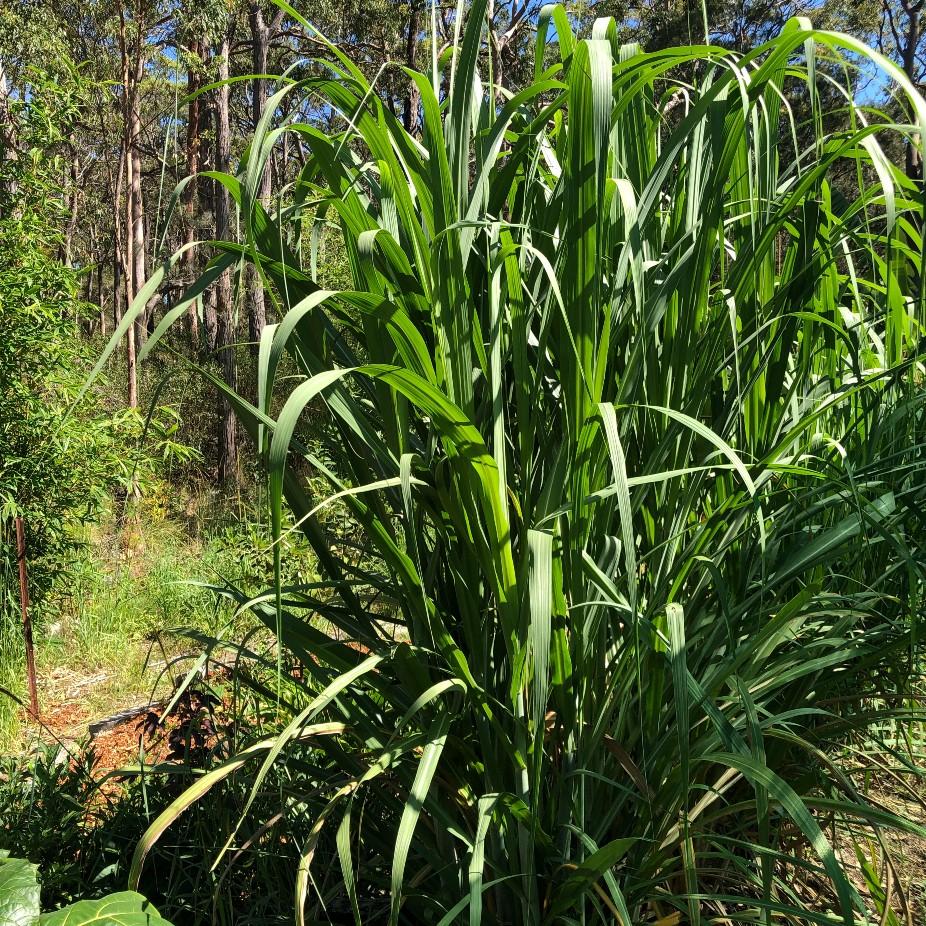
Mexican Sunflower – a shrub with soft leaves and sunflower-like flowers to brighten the shortest days of the year. Here on the picture it’s drought stressed, but after a rain it will bounce back vigorously. There are many similar soft shrubs that can be used for the same purpose.
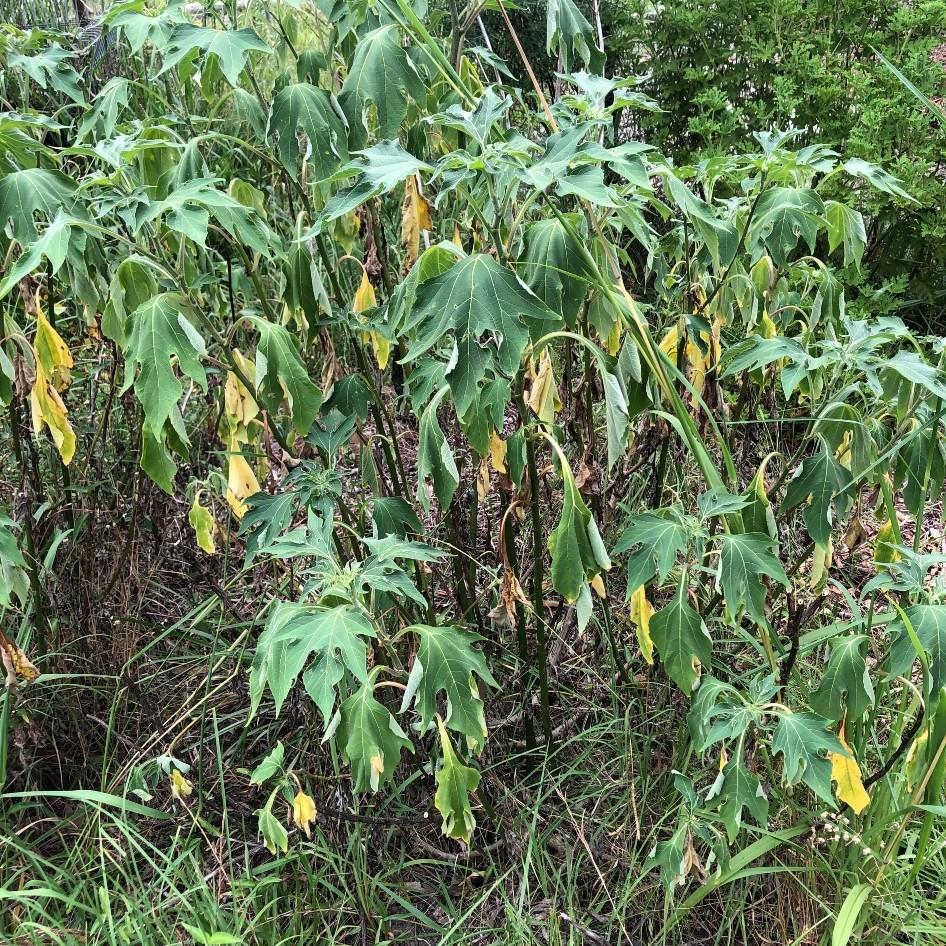
Leguminous Shrubs – the Nitrogen Fixers. On the picture is Crotalaria. It is soft, good looking, deer and kangaroos leave it alone. It has yellow flowers in terminal spikes in winter and funny puffed-up pods afterwards. Acacias are good, there are lots of them, very hardy, very fast growing. There are also leguminous shrubs used as fodder trees or for coppicing, or they can be spikey, or deciduous – there is lots of useful trees and shrubs in the Fabaceae family.
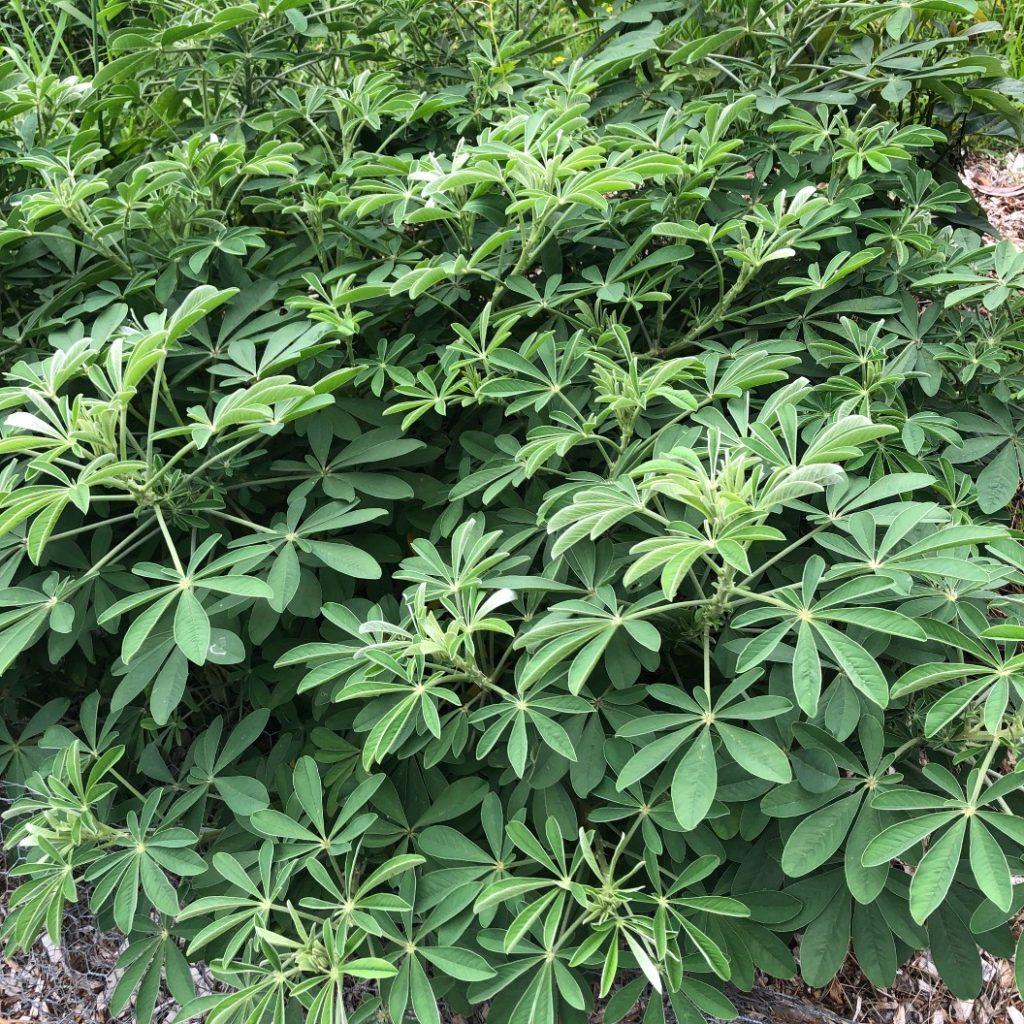
Horseraddish Tree – for frost free areas. A useful medicinal tree, beautiful looking, fast growing, can be cut back often once established. Deciduous outside tropics.
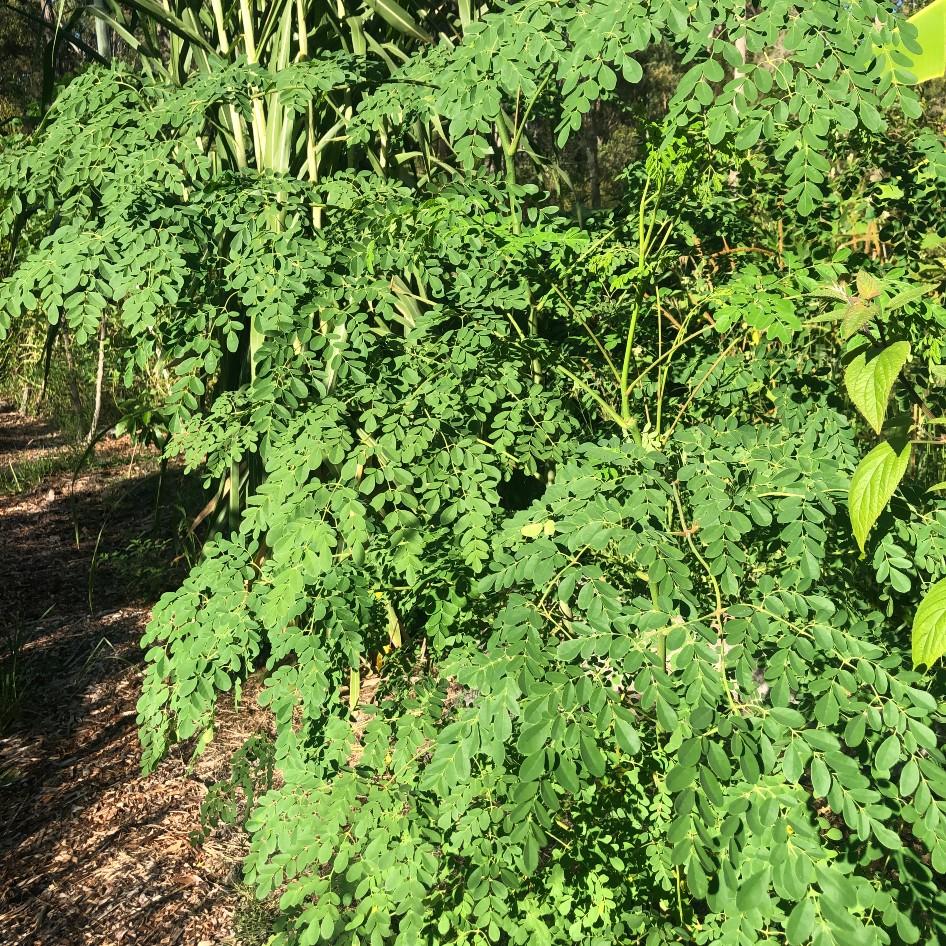
Empress Tree Paulownia tomentosa. This is a very fast growing tree, suitable for coppicing, so it can be hard to get rid of when established. It is beautiful looking, deciduous, good timber, flowers in spring.
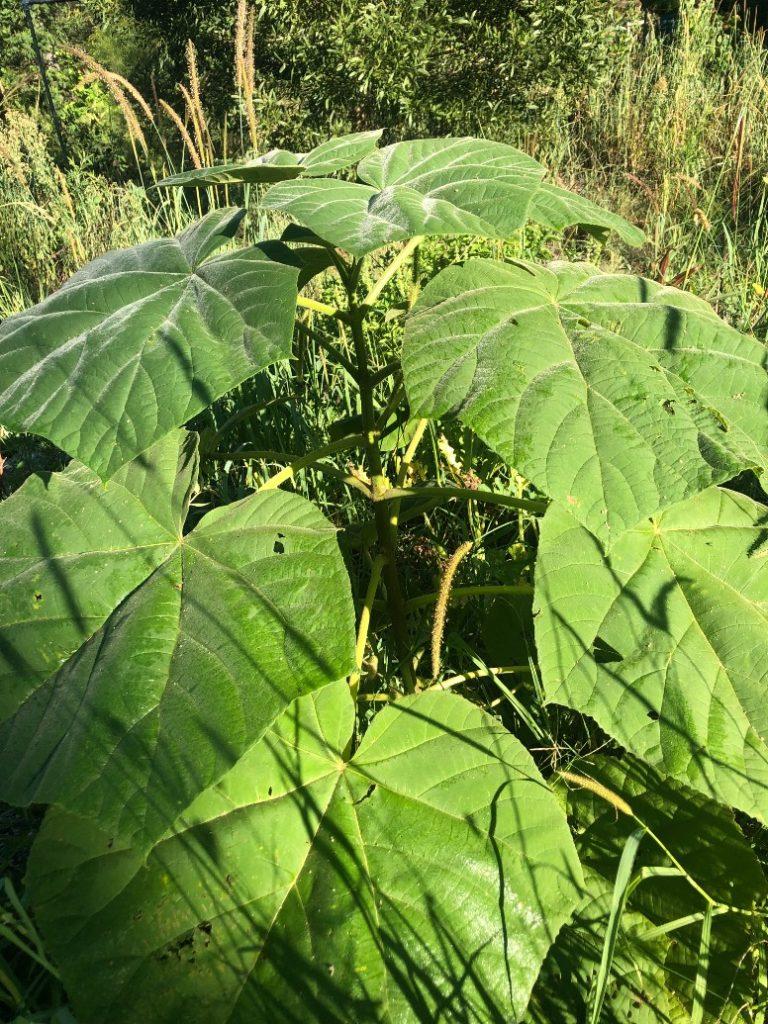
Bananas. Apart from eating the fruits, there are other uses as well. Bananas grow very fast if they have lots of food and water. Ideally you keep only the fruiting stem (grandmother), which is cut down after the harvest, one strong new leader (mother) and one new pup (daughter) per plant. All the other shoots should be cut out. That’s a lot of mess which will make a lot of good soil. Of course, plant many of them to have abundance. There are also other soft stemmed plants especially in the Ginger or Canna Family suitable for biomass production.
